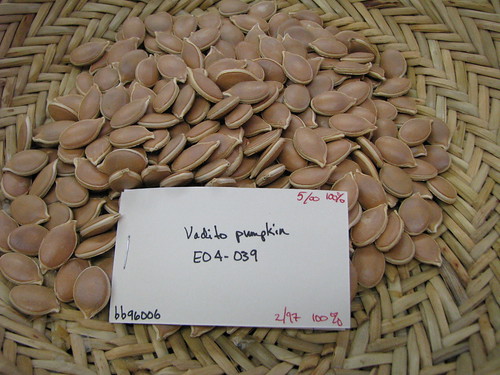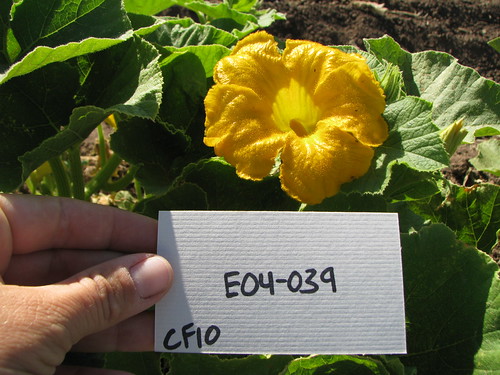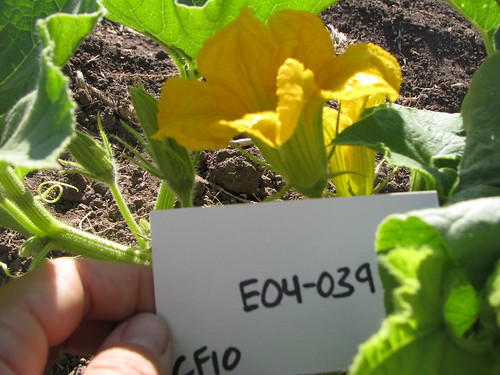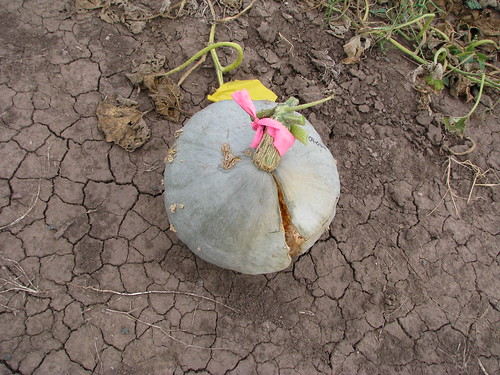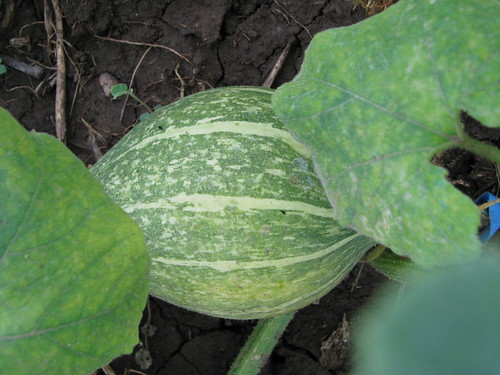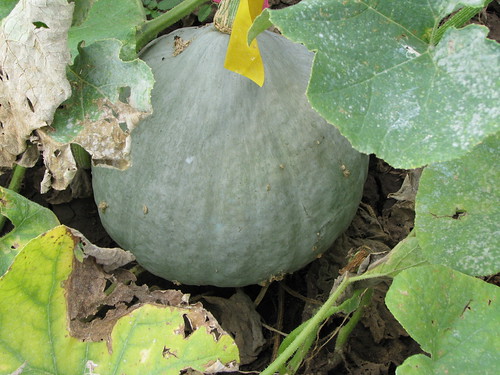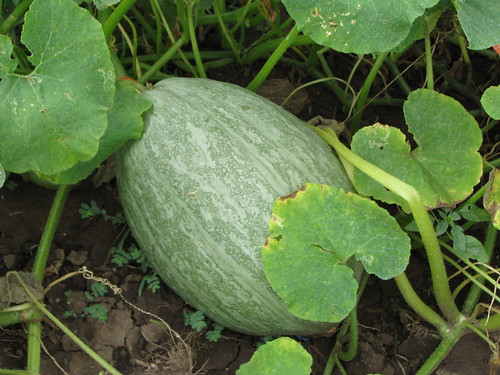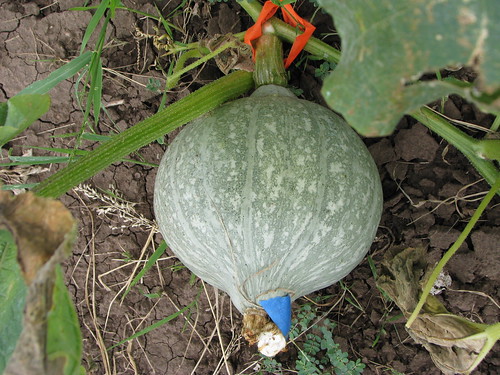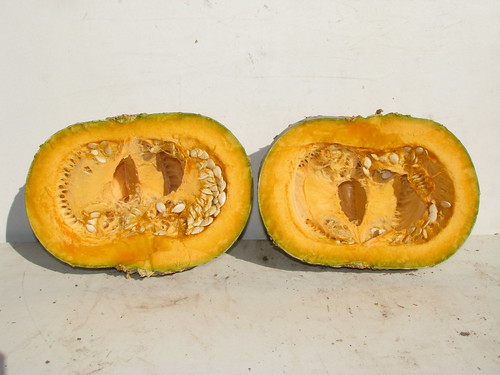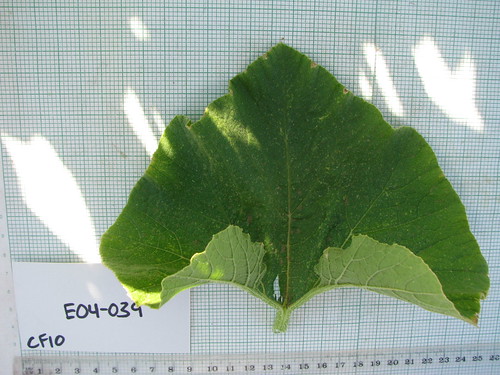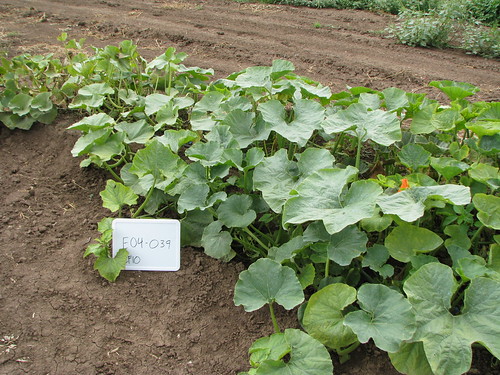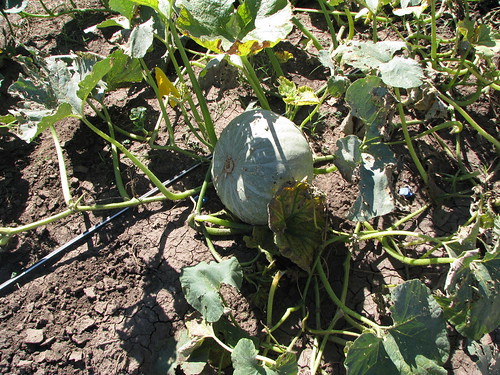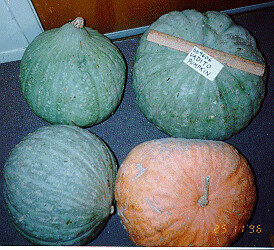ADAPTS
the Adaptive Drylands Agriculture Portal for The Southwest
E04-039
Collection | Availability | Map | Climate | Photographs | Observations | Cultivation & Seed Saving | Feedback
Basic Collection Information and Status
Squash (Cucurbita maxima, Cucurbitaceae)
Cultural Affiliation n/aCollection Site New Mexico, United States (latitude: 36°; altitude: 8,000 ft / 2,400 m)
Collection Year 1996
Accession Status Active
Catalog Information and Instructions
Vadito PumpkinEX018
Gray or orange spherical fruit, often with pointed ends. Sweet orange flesh. Occasional elongated fruit present. From Vadito in Northern New Mexico at 8,000'.
View All 2 Accessions of Vadito Pumpkin (EX018) (this will reset your search)
View All 2 Accessions of Vadito Pumpkin (EX018) (this will reset your search)
Current availability of this variety is summarized below. We encourage the use of these seeds to benefit humanity and strive to facilitate access through a number of channels.
Seeds of this variety are not currently available for distribution. If you are interested in this accession for research, seed increase, or repatriation purposes, please contact us.Collection Site
The circle in the map below shows the area where this accession was collected (why isn't the precise locality shown
?Precise collection localities are hidden in order to protect the privacy of the original donors of the seeds in the NS/S collection.
). You have not specified a reference site, but you may specify one and rerun your search.The graphs below summarize aspects of the climate for this accession's collection site. You have not specified a reference site, but you may specify one and rerun your search.
Photographs
The Native Seeds/SEARCH digital photo collection for this accession is provided below.
image hosting provided by Flickr — all photos © Native Seeds/SEARCH — please contact us for permission to useCharacterization and Evaluation
There are currently no observational data available for this accession. If you have made observations of this accession and are willing to share them, please contact us.
| Squash Introduction | Cultivation Instructions | Seed Saving Instructions |
|---|---|---|
| Squash fruits vary in shape, color and flavor. Flowers, seeds and growing tips of vines are all edible. All fruits can be eaten when small and immature as summer squash, and mature as winter squash. | In spring after soil warms, or with summer rains, sow a few seeds 1" deep in basins 3-6' apart, allowing room for abundant vine growth. Squash likes soil rich in compost. | An insect-pollinated annual, varieties of the same species will cross. Allow fruits to ripen and mature on the vine until skin is hard and stem brown. After harvesting, fruit needs to after-ripen for 30 days in cool location. Remove seeds, wash and dry before storage. |
If you have questions or feedback about this accession or the ADAPTS platform in general, please contact us.

